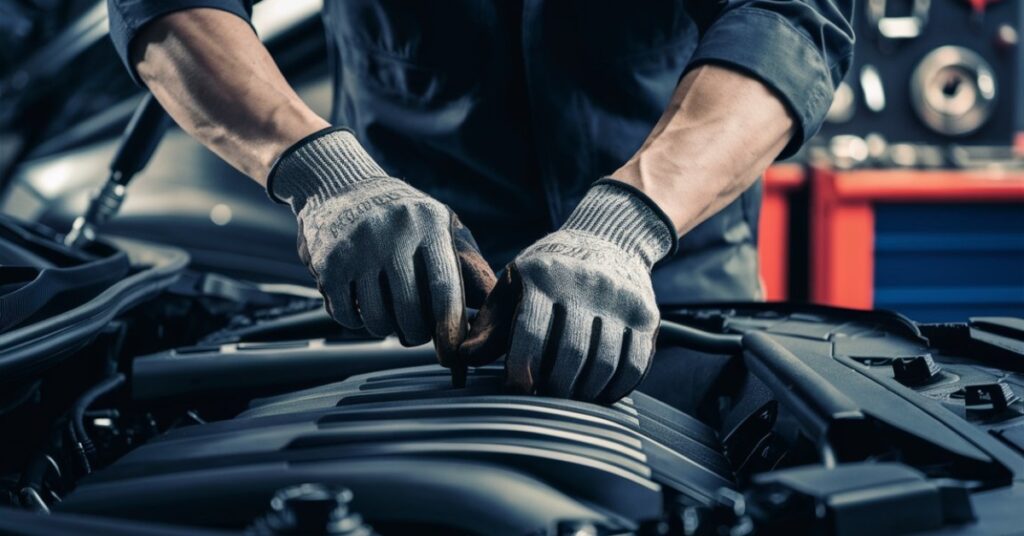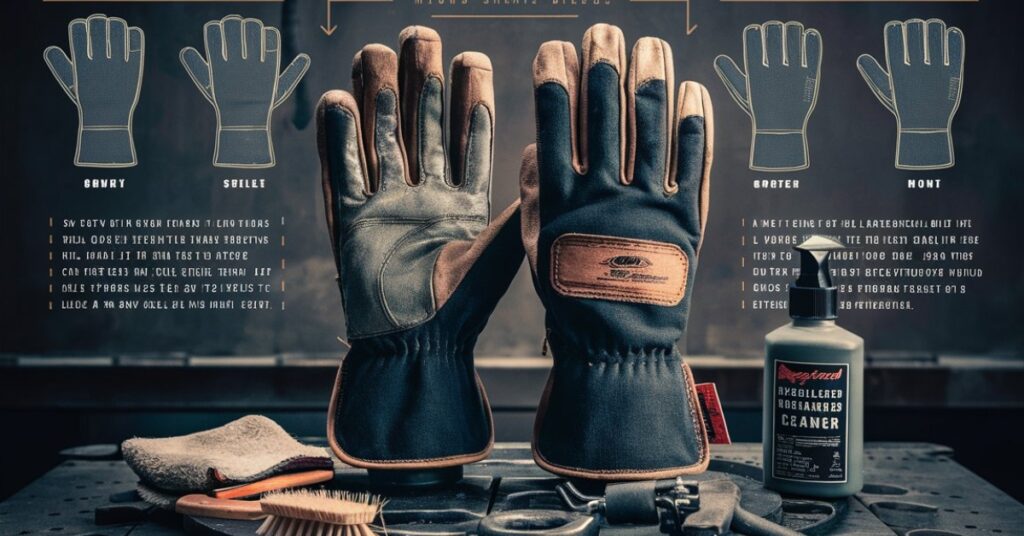Introduction to Mechanic Gloves
Mechanic gloves are one of the most important tools in the toolbox of automotive technicians. They provide protection, dexterity and comfort while performing maintenance and repair jobs.
In this guide, we’ll cover everything you need to know about mechanic gloves, including. Mechanic glove anatomy Types of gloves Benefits of using mechanic gloves Best practices Challenges Trends in glove technology.
The Importance of Hand Protection in Automotive Maintenance

When it comes to automotive maintenance and repair, technicians’ hands are exposed to a lot of different things. From sharp edges to hot surfaces, chemicals to abrasive materials, the list of things that can cause injury to a technician’s hands is endless.
That’s where mechanic gloves come in. Mechanic gloves protect your hands from cutting, burning, abrasions and chemical exposure. Not only do they minimize the risk of injury, but they also improve comfort and dexterity, enabling you to work safely and effectively for long periods of time.
Understanding the Anatomy of Mechanic Gloves
Mechanics gloves are made with durability, flexibility and grip in mind. They are made with a variety of materials and features to suit the needs of the automotive work environment. The anatomy of a mechanic glove includes the palm, the fingers, the back, the cuff, and the closure mechanism.
Each part plays a role in the protection, comfort and function of the gloves. Materials used in the construction of mechanics gloves include synthetic leather, nylon and spandex, as well as rubber, which offers a combination of strength, flexibility and tactile sensitivity.
Types of Mechanic Gloves and Their Applications
Types of Mechanics Gloves There are many different types of mechanics gloves available. Each type is designed for a specific job and needs. Some common types of gloves include: Disposable nitrile gloves Mechanic’s gloves with padded palms Cut-resistant gloves Impact-resistant gloves Heat-resistant gloves.
Key Features to Consider When Choosing Mechanic Gloves
When it comes to choosing mechanics gloves, there are a few key factors that technicians should keep in mind to make sure they meet their requirements and preferences.
Material Durability Breathability Flexibility Grip Strength Abrasion Resistance Chemical Resistance Touchscreen Compatibility Size Closing Mechanism Comfort.
Benefits of Using Mechanic Gloves in Automotive Workshops
Mechanics gloves don’t just provide protection for your hands. They can also improve safety, increase productivity, and increase job satisfaction in your automotive workshop.
Mechanics gloves not only protect your hands from injuries and downtime, but they also help keep your workshop clean and sanitary. Gloves help reduce the amount of oil, grease, and other impurities that can contaminate your work environment. T
hey also improve grip and sensitivity, allowing you to perform tasks more accurately and efficiently.
Best Practices for Caring for and Maintaining Mechanic Gloves

If you want your mechanics gloves to last as long as possible, there are a few things you can do to keep them in good condition:
1. Clean and store your mechanics gloves properly.
2. Avoid exposing your mechanics gloves to harsh chemicals or excessive heat.
3. Inspect your mechanics gloves regularly.
4. Check for wear or damage on your mechanics gloves.
5. Keep your mechanics gloves clean and in good condition. By following these tips, you can extend the life and effectiveness of your mechanics gloves. They will last longer and be more comfortable to wear on the job.
Common Challenges and Misconceptions About Mechanic Gloves
Despite their many advantages, mechanics gloves can face some challenges and misunderstandings in automotive workshops. Some common problems include glove discomfort due to improper glove fit or ventilation, decreased tactile sensitivity when working with small parts/tools, and hesitating to wear gloves for some tasks.
Misconceptions about glove effectiveness or discomfort can also discourage some technicians from using gloves on a regular basis. By addressing these issues and educating technicians on the importance of using gloves, resistance can be overcome and safer work practices can be achieved.
Innovations and Trends in Mechanic Glove Technology
Material science, design and manufacturing techniques are changing the way mechanics gloves are made. Gloves that are better in terms of protection, comfort and function are on the rise.
Some of the latest trends include lightweight and breathable gloves, ergonomic glove designs for better fit and flexibility, touchscreen-compatible glove coatings, smart glove technologies that track hand health and performance, and more.
By staying ahead of the curve, automotive technicians can use glove technologies to improve safety and productivity in their work.
Safety Standards and Regulations
Mechanics gloves comply with OSHA, ANSI, and other safety standards. OSHA and ANSI standards lay out requirements for the glove’s performance, wear and tear, chemical tolerance, and ergonomics to provide workers with adequate protection.
Safety standards not only help create a safer workplace, but they also reduce the potential for regulatory fines and liability resulting from workplace injuries.
Conclusion
All in all, mechanic gloves are an essential tool for promoting safety, comfort and efficiency in your automotive maintenance and repair work. Mechanic gloves help protect against injuries and downtime in automotive workshops by providing a barrier against cuts, burns and chemical exposure.
They also improve grip, dexterity and tactile sensitivity, allowing technicians to complete tasks with greater accuracy and confidence. As automotive technology advances, so does mechanic glove technology.
With innovations aimed at increasing protection, comfort and functionality for technicians, it’s no surprise that mechanic gloves have become an essential tool in your toolkit. By embracing mechanic gloves, automotive technicians can create safer, more efficient work practices that benefit workers and employers alike.

